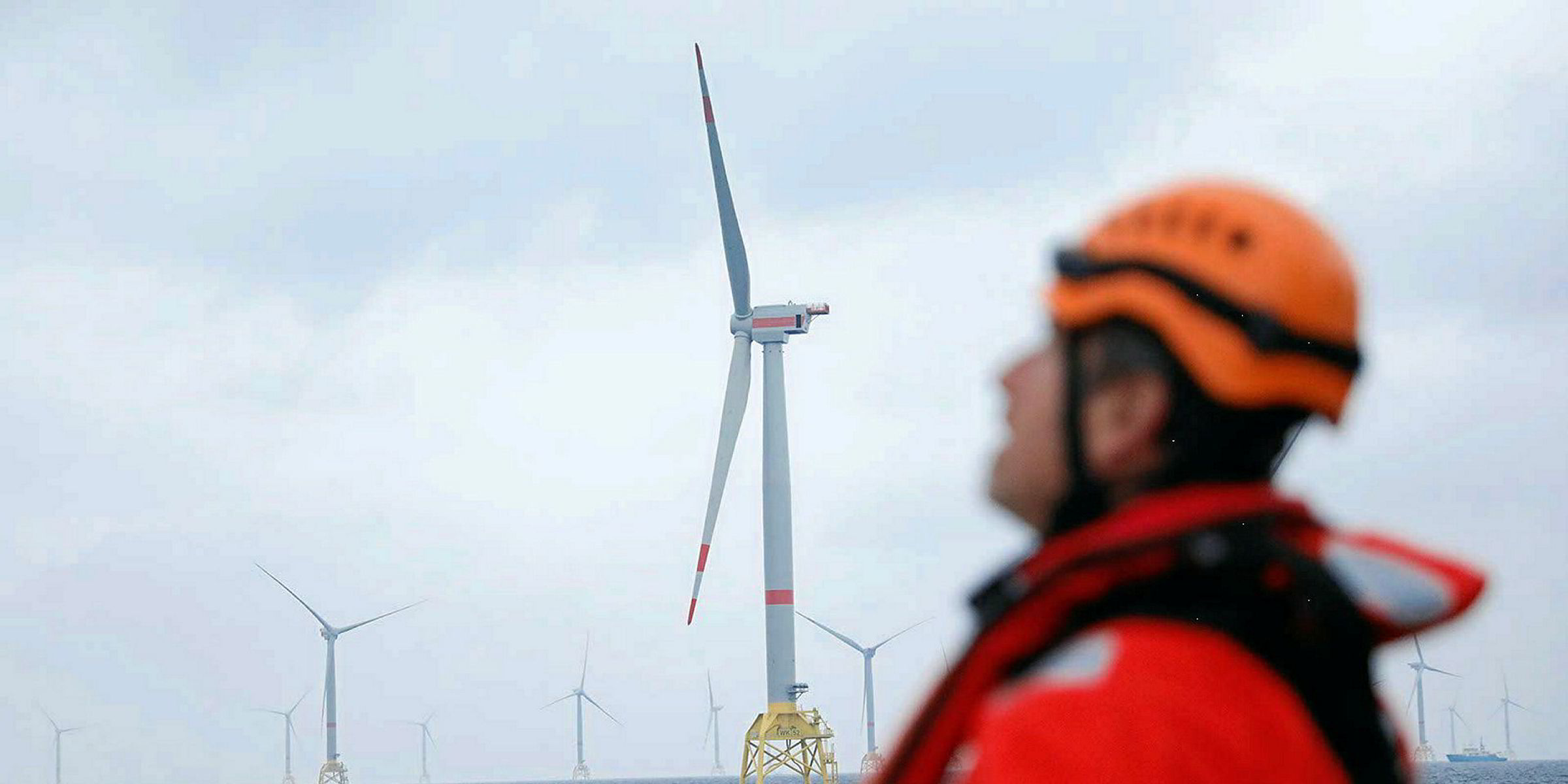Gross electricity consumption from renewables in Germany this year reached 217 billion kilowatt hours, or 36.1% – already beating a 35% target set for 2020, according to preliminary figures from federation of energy and water industries BDEW.
Renewables in 2016 accounted for 188 billion kWh, or 31.6% of electricity used in Europe’s largest economy, where strong growth in onshore and offshore wind is driving green power consumption.
“Already now renewables have exceeded the target of the federal government in its energy concept for 2020 of a 35% renewables share in gross electricity consumption,” BDEW chairman Stefan Kapferer said.
“That is good news for climate protection. But for electricity from renewables to be used amply, we need to push ahead with the expansion of North-South transmission lines. The grid expansion must be linked closely to the renewables build-up.”
Despite recent dramatic price declines, Germany’s government has rejected a faster expansion of renewables due to delays in the construction of several high-voltage direct current (HVDC) transmission lines to link the country’s windy North to its industrial and population centres to the South.
When only looking at Germany’s gross power generation, renewables widened their share to 33.1% in 2017, according to preliminary figures, from 29% in 2016.
The discrepancy between generation and consumption figures comes as Germany exports close to 10% of its electricity to neighbouring countries.
Offshore wind this year had the highest growth rate, with a 49% jump in production to 18bn kWh, followed by onshore wind with a 31% rise to 87bn kWh.
Onshore accounted for 40% of renewables generation, followed by biomass with 24% and PV with 18%.
In terms of overall generation, onshore wind produced 13.3% of all electricity generated in Germany this year, followed by 7% from biomass, 6.1% from PV, 3% from hydro power, 2.8% from offshore wind, and 0.9% from waste.
Hard coal and lignite still accounted for a combined 37% of the electricity generation mix, while natural gas had a 13.1% share, and nuclear 11.6%.
But Kapferer stressed that the share of coal and lignite finally has been decreasing, from 40.3% a year earlier.
“The figures show in an impressive way that there already is an accelerated shift from electricity generation from CO2-intensive to CO2-light and nearly CO2-free energy sources,” he said, adding that the energy industry is well on course to lower emissions by 40% by 2020 when compared to 1990 levels.
The BDEW head said that amid Germany’s nuclear exit by 2022, and a gradual decline in coal and lignite-powered generation, the country should invest in “low-emission gas power plants” to avoid massive power deficits in 2023.
His view strongly contrasts to that of environmental and renewables groups, who lobby for a faster expansion of renewables and not gas.
The BDEW officially represents the entire energy industry, but is dominated by fossil-heavy utilities such as RWE, who are trying to fend off a too-fast coal exit in the country and want to keep gas-fired generation for decades to come.


